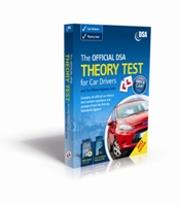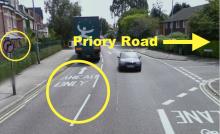Are you ready to be confused? This article from The Telegraph (August 2011) is titled “How do accidents happen?”
It begins by reference to a nondescript accident like you may encounter on your daily travels – traffic queue, blue lights, paramedics, twisted wreckage, and so on – and then links this in with the question “what happened, and could it happen to me?”
It then continues…
Now, for the first time, a startling new report…
Just bear that sentence in mind until a little later while I deal with this article.
The “brand new report” is called “Licence to Skill”, and has apparently broken down what happens in the lead up to an accident and has categorised them by blame, age, sex, what they did wrong, and so on. It is based on police data from around 700,000 accidents between 2005 and 2009. It is written by the Institute of Advanced Motorists (IAM).
Neil Greig, the IAM project manager, reckons it has been a “real eye-opener”. He claims that it has “[dispelled] some of the popular myths”. He goes on:
For instance, if you look at Government campaigns they seem to say that speed is the number one problem. But illegal speeding – when drivers exceed the posted limit – accounts for only 13.9 per cent of fatal accidents.[*] A bigger cause [15.9 per cent] is going too fast for the conditions – entering a bend too quickly, for instance – when you might well be under the actual speed limit.(**)
What? Which government campaigns is he referring to? I don’t remember anyone telling me that specifically exceeding the speed limit is the number one problem (*). They may well focus speeding per se when they make their TV ads, but they are not saying that it is only breaking the speed limit that is the problem. Ever since I was taught to driver I have known that inappropriate speed is the number one problem – and I’ve always accepted that speed limits are established to reduce the potential effects of that inappropriate speed.
It’s worth quoting a DETR (Department of the Environment, Transport and the Regions) spokesman from 1999 as part of a “Speed Kills” campaign back then:
The chances of a pedestrian being killed by a car driving at 35mph are twice as high than if the car is doing 30mph.
Some people out there – mainly members of certain groups who think they’re better drivers than everyone else – believe that they should be allowed to decide what is a safe speed, and that speed limits are a waste of time. Go figure that one out.
And what is this nonsense suggesting that speeding per se is irrelevant? I’d point out to Mr Greig that 13.9% and 15.9% are rather close. Indeed, in relation to his 700,000 accidents (just assume they were all deaths for a moment), 13.9% would be just over 97,000 deaths, and 15.9% would be just over 110,000.
They’re both bloody important!
But let’s go back to this claim that all this is brand new.
This Daily Mail story from 2008 says:
Only 3 per cent of car accidents are caused by speeding drivers, Government figures have revealed.
Yet there are nearly 7,000 speed cameras across the country which are unable to detect ‘careless or reckless’ drivers who cause three times as many accidents.
Critics say the Department for Transport figures demolish the main justification for cameras.
If I’d have seen that back in 2008 I would have reported on it as the Mail deliberately being anti-Labour (the then government) and nit-picking with only part of the information for its own purposes. It goes on to say:
Four of the five most frequently reported contributory factors in accidents involved driver or rider error or reaction.
It’s beginning to look a lot like the IAM report, isn’t it? And back in 2008, the AA commented on the government figures:
These figures show that human errors – and the human wish to find a shortcut – contribute to the vast majority of accidents. Some drivers make genuine mistakes and some deliberately take risks.
The RAC added:
…that there was no room for complacency, with drivers between 16 and 29 making up nearly 50 per cent of all driver fatalities.
Interestingly, the story from 2008 relates to accident data in 2007. It reports that there were “247,780 casualties” – just in 2007. So unless there has been a bloody huge fall in accidents in the last 5 years, those “700,000 accidents” that IAM has reported on must have been heavily censored, because on a pro rata basis you’d expect the report to be covering more like 1¼ million (twice as many) accidents.
And then, back in 2004, there was another press release, titled “At Last: The Truth About Road Accident Causation” put out by Safe Speed (and I am aware of the publication date, but can’t see what purpose it would serve as an April 1st hoax). They report that data from 13 police forces reveal accident cause breaks down thus:
- Inattention 25.8%
- Failure to judge other person’s path or speed 22.6%
- Looked but did not see 19.7%
- Behaviour: careless/thoughtless/reckless 18.4%
- Failed to look 16.3%
- Lack of judgement of own path 13.7%
- Excessive speed 12.5%
Excessive speed is similar to the IAM figure, though it’s hard to draw comparisons with the other categories because IAM has invented its own.
Safe Speed makes this explicit distinction:
“Excessive speed” includes both “speed in excess of the speed limit” and “inappropriate speed for the conditions”. Data from Avon and Somerset – the only such data available in the UK – warns us that 70% of these “excessive speed accidents” take place entirely within the speed limit. We should therefore assume that in all probability only some 3.75% of our road accidents involve exceeding a speed limit.
Again, almost identical to the IAM findings and the ones reported four years later by the Daily Mail. Safe Speed further adds:
Paul Smith, Founder of the Safe Speed campaign, comments: “When the main causes of accidents involve drivers failing to properly observe or react to road hazards it should be obvious that the modern emphasis on speed limit enforcement by camera risks INCREASING these common accident types as precious and vital driver attention is diverted to the speedometer, speed limits and the risk of speed enforcement operations.”
Paul continues: “It is outrageous that we have had to wait many years to see this important road safety information. It turns out that certain Police forces have been supplying such data to the DfT since 1997, yet the DfT have failed to publish it and have failed to respond properly to requests to view the data. Our modern road safety policy is based on incomplete data and false assumptions. No wonder we have had the poorest road safety decade on record.”
There is a huge amount of spin being applied by people out there who don’t like speed cameras. I’m not sure how Mr Smith sees it as being so “obvious” that cameras are the cause of these accidents – I pointed out in a recent story about speed cameras how people wouldn’t have to worry about them if they didn’t break the limit in the first place. Mr Smith “obviously” hasn’t considered that.
So, in a nutshell, the IAM report isn’t “new” – in that it doesn’t report anything that hasn’t been reported before. At best, more recent data back up exactly what has always been the case. It also can’t hide an underlying dislike of speed cameras, and a belief that they are there to make money – it’s almost as if speed cameras being classed as evil was an initial premise, even before the report was written. You can see it coming through in the rhetoric.
It stands to reason that the faster people drive, the more likely it becomes that they will not be able to respond appropriately to a sudden hazard in front of them. This will be true at any speed.
Common sense would dictate that good drivers would moderate their speeds according to traffic conditions. The accident statistics clearly suggest that this doesn’t happen – and these reports are merely identifying the outcome of that.
However, since drivers are incapable of applying common sense in enough numbers for people not to keep being killed and seriously injured, it is necessary for speed limits to be applied to reduce the carnage – and ever-lower ones at that (campaigns to reduce it to 20mph in current 30mph zones, for example). But drivers are not even smart enough to obey these speed limits, exceeding which will result in fines and points on their licences.
So why should so many tears be shed over them being caught?
The current data show that speed AND speeding are serious problems.







